The Ultimate Guide In Mastering Facebook Ad Policy by Triple Blossom
$49,00 $15,00
The Ultimate Guide in Mastering Facebook Ad Policy – Instant Download!
Let’s embark on a captivating adventure to uncover remarkable insights that spark your curiosity and elevate your understanding

The Ultimate Guide In Mastering Facebook Ad Policy by Triple Blossom
Overview
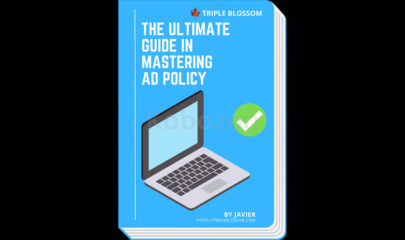
The Ultimate Guide in Mastering Facebook Ad Policy
In the fast-paced world of digital marketing, advertising on platforms like Facebook presents a unique set of challenges and opportunities. Understanding the intricate web of Facebook’s ad policies is crucial for anyone looking to capitalize on this vast market. With billions of users globally, Facebook offers unparalleled access to target audiences, but this opportunity comes with strict guidelines. Missteps can lead to ad rejections, account restrictions, and even outright bans. Thus, advertisers must navigate this complex landscape with both strategy and compliance in mind.
In this guide, we aim to demystify Facebook’s ad policies, outline key compliance elements, and provide practical strategies for mastering the ad approval process. As we delve deeper into this subject, we will examine common pitfalls that lead to ad rejections, analyze Facebook’s automated review process, and offer valuable tips and resources for building a successful advertising campaign. By the end of this guide, you will be equipped with the knowledge and tools needed to create effective, compliant ads that resonate with your audience while adhering to Facebook’s stringent policies.
Understanding Facebook Ad Policies
Facebook ad policies are like the rulebook for those who want to advertise on the platform. They serve as guidelines to ensure that ads are safe, respectful, and appropriate for all users. Just like any responsible game, following these rules is crucial for enjoying ongoing participation; otherwise, players risk penalties, such as penalties or being barred from the field altogether.
At its core, Facebook’s advertising policies are aimed at creating a positive user experience. By keeping ads authentic and relevant, the platform ensures users aren’t bombarded with misleading or harmful content. The importance of these guidelines cannot be understated adherence leads to successful campaigns, while ignorance can result in quick ad rejections or account restrictions.
Key compliance elements that advertisers must familiarize themselves with include prohibited content, community standards, and proper ad targeting. Engagement with community guidelines also addresses more sensitive topics, such as personal attributes and political views, ensuring that advertising remains a level playing field free from discrimination. Understanding these expectations builds a foundation for effective advertising strategies that align with Facebook’s mission to create a positive online environment.
Key Compliance Elements in Facebook Advertising
Understanding the key compliance elements of Facebook advertising is essential for any marketer. Here’s a breakdown of the fundamental components to consider:
- Prohibited Content: Advertisements must not contain illegal products, misleading claims, or offensive material. For instance, the promotion of adult content or discriminatory practices is strictly forbidden.
- Effective Landing Pages: Your ads should link to functional landing pages that accurately reflect ad content. If users click on an ad expecting one thing and are directed to something misleading or broken, this can result in ad rejection.
- Content Quality: High-quality standards must be maintained in grammar, imagery, and professionalism. Ads with poor language or low-resolution images can be flagged as substandard and rejected.
- Text and Image Ratio: Facebook promotes minimal text overlay on images and may limit the reach of content that exceeds certain text-to-image ratios.
- Feedback and Engagement: User feedback is a crucial component of compliance. Low scores can indicate poorly received ads or discontent, leading to restricted advertising capabilities.
To visually encapsulate these key elements, refer to the table below:
| **Compliance Element** | **Description** |
| Prohibited Content | Avoid illegal products, offensive material, and misleading claims. |
| Effective Landing Pages | Ensure ads link to functional pages that match ad content. |
| Content Quality | Maintain high grammar standards, appropriate images, and professionalism. |
| Text and Image Ratio | Keep image text minimal to avoid reach limitations. |
| Feedback and Engagement | Monitor audience reception and feedback to maintain ad integrity. |
Each compliance element is interconnected, and understanding them holistically is critical for advertisers aiming for success within Facebook’s ecosystem.
Common Reasons for Ad Rejections
Ad rejections are frustrating setbacks many advertisers face on Facebook. Understanding the common reasons ads get rejected not only equips marketers with knowledge but also prevents future violations. Here are some prevalent causes for ad rejection:
- Prohibited Content: Ads containing illegal products, misleading claims, or offensive materials will be rejected outright. This extends to content that incites violence or spreads misinformation.
- Community Standards Violation: Ads must conform to Facebook’s community standards, avoiding offensive content, adult material, or any discriminatory language.
- Deceptive Practices: If ads mislead users about products or services, they risk rejection. Claims must be supported and avoid sensational language.
- Dangerous Content: This encompasses content related to illicit drugs, weapons, and hazardous activities, all of which are outright prohibited.
- Negative User Feedback: If ads receive negative reactions or are flagged by users, they may face rejections or limited reach.
Here’s a list encapsulating the common reasons for Facebook ad rejections:
- Prohibited content (illegal, offensive)
- Community standards violations
- Deceptive or misleading claims
- Dangerous materials in advertising
- Negative user feedback or reactions
Understanding these common rejection reasons is vital for devising strategies to create compliant ads that foster positive user experiences.
Analyzing Facebook’s Automated Ad Review Process
The ad review process on Facebook is essential in maintaining a safe environment for users. The automated system is designed to quickly and efficiently evaluate ads based on a set of established guidelines. Here’s how it generally operates:
- Content Review: Automated algorithms analyze the images, videos, and text within the ad to ensure adherence to Facebook’s advertising policies.
- Targeting Evaluation: The targeting parameters used in the ad are examined to validate they comply with Facebook’s policies regarding discrimination and sensitive audience targeting.
- Landing Page Inspection: The destination URL is also scrutinized to guarantee it aligns with the ad’s claim. Any discrepancies can result in ad rejection.
The review process typically takes up to 24 hours, and errors in any of these areas can lead to complications. If an ad is rejected, advertisers have the opportunity to request a review, providing additional context for the reviewers.
By comprehensively understanding these processes, advertisers can better anticipate potential roadblocks and take proactive steps to ensure successful ad submissions.
Strategies to Overcome Ad Rejections
Overcoming ad rejections is an unavoidable step in mastering Facebook ad policy. By employing strategic methodologies and frameworks, advertisers can reduce the likelihood of facing rejection in the first place. Here are essential strategies to consider:
- Familiarize with Facebook Policies: Understanding the landscape of Facebook’s advertising rules is fundamental. Use insights from comprehensive guides to grasp the policy framework.
- Analyze Your Ad Content: Review your content critically, focusing on the messaging, imagery, and compliance with Facebook standards. Ensure clarity and alignment with user expectations.
- Test Variations of Your Ads: Conduct A/B testing with different ad versions, tweaking elements like images and copy to identify combinations that yield successful approvals.
- Submit for Review with Context: When contests arise, provide ample context when requesting a review. Clearly explain the intent behind your ad to make it more palatable for reviewers.
- Seek Support and Learn: Engage with Meta’s Business Help resources and online communities to gather insights from other advertisers and experts. Knowledge sharing can illuminate common mistakes and lead to more effective practices.
The combination of vigilance and strategic testing can streamline the ad approval process and help advertisers maintain robust campaigns.
Troubleshooting Ad Issues with the FATSS Framework
The FATSS framework serves as a practical tool for overcoming ad rejection challenges on Facebook. It encompasses five critical steps that lead to successful ad submissions:
- F – Familiarize with Facebook Policies: Understand specific advertising policies to dodge common pitfalls.
- A – Analyze Your Ad Content: Thoroughly review wording and visuals to eliminate potential non-compliances.
- T – Test Variations of Your Ads: Execute A/B tests with differences in the message and targeting to identify what works best.
- S – Submit for Review with Context: Always accompany submissions with explanations, especially if addressing previously flagged issues.
- S – Seek Support and Learn: Utilize resources and community support to continuously educate oneself on best practices.
By applying the FATSS framework, advertisers bolster their chances of smooth, successful interactions with the ad review process, and can repeat this method across campaigns.
Best Practices for Crafting Compliant Ads
Crafting compliant ads goes beyond understanding rules; it requires a proactive approach focused on precision. Here are best practices to maintain compliance while creating effective advertising content:
- Understand Facebook’s Advertising Policies: Diligently review Facebook’s guidelines to grasp expectations and conform to them.
- Review Content Provisions: Ensure no prohibited content, adult material, or misinformation is present in ads.
- Utilize High-Quality Imagery: Employ professional visuals and concise, compelling language. Avoid clutter and ensure that imagery resonates with the audience.
- Clarity and Value: Your messaging should communicate the product’s value clearly without vagueness. Focus on how it solves an audience’s need.
- Inclusive Representation: Use authentic images representing diverse backgrounds, which strengthens engagement and aligns with Facebook’s standards.
By implementing these best practices, advertisers can significantly increase their chances of submitting compliant ads, enhancing both the quality and effectiveness of their campaigns.
Copywriting Techniques for Effective Facebook Ads
Effective copywriting stands as a pillar in creating high-performing Facebook ads. The following techniques can aid marketers in developing compelling content that not only meets compliance but also engages users:
- Focus on Benefits: Highlight the benefits users will receive, rather than just listing features. This approach speaks directly to their needs and interests.
- Incorporate Strong CTAs: Use clear calls-to-action that guide users on what steps to take next whether that’s shopping, learning more, or signing up.
- Avoid Misleading Claims: Ensure all claims are truthful and can be substantiated. Avoid exaggeration that could mislead users.
- Craft Engaging Headlines: Create attention-grabbing headlines relevant to the target audience, ensuring they reflect the ad’s content.
- Experiment with Formats: Try different ad formats (static, video, carousel) to see what resonates best, all while adhering to Facebook’s guidelines for each format.
Implementing these copywriting techniques can enhance ad performance and help marketers build a strong presence on the platform.
Navigating Account Restrictions
Navigating account restrictions can feel like walking through a minefield for advertisers, but understanding the landscape is key. Account restrictions often arise from repeated policy violations, irregular activity, or circumventing Facebook’s safety measures. Here’s a brief overview of common triggers:
- Repeated Policy Violations: Continually submitting ads that violate policies can lead to stricter scrutiny and eventual restrictions.
- Irregular Activity: Unusual account behavior, such as sudden spikes in ad performance or spending patterns, can flag accounts.
- Circumventing Advertising Systems: Attempts to bypass ad review protocols or guidelines can result in significant penalties.
- Feedback Scrutiny: Monitoring negative feedback is critical. Low information scores indicative of user dissatisfaction can lead to account restrictions.
By understanding these triggers and proactively reviewing ad performance and user feedback, advertisers can take steps to mitigate the risk of account restrictions.
Identifying Triggers for Account Restrictions
Identifying potential triggers for account restrictions can be the difference between maintaining a healthy advertising account and succumbing to penalties. Here are key considerations when evaluating your account’s health:
- Performance Metrics: Regularly monitor metrics such as click-through rates, conversion rates, and overall engagement scores.
- Ad Review Feedback: Pay attention to messages from Facebook regarding policy violations. Clear indications of why an account might be flagged provide invaluable insights.
- Community Interaction: Assess the nature of comments and engagement on your ads negative sentiments can spike red flags with Facebook.
- Account Changes: Reflect on any changes made to your ad content, targeting, or overall strategy. Sudden shifts can attract scrutiny.
- Engagement with Guidelines: Following Facebook policies diligently will reduce the chances of being penalized for inadvertent violations.
Understanding and monitoring these potential triggers will help prevent missteps and reinforce a positive advertising experience on Facebook.
Steps to Appeal Account Restrictions Successfully
When faced with account restrictions, appealing successfully requires a strategic approach. Here are steps based on best practices from comprehensive guides such as “The Ultimate Guide in Mastering Facebook Ad Policy”:
- Understand Restriction Reasons: Familiarize yourself with Facebook’s policies covering common triggers that lead to restrictions.
- Review Content and Practices: Analyze recent ads for policy violations and adjust your strategies accordingly.
- Document Your Case: Collect evidence, such as screenshots and communications, supporting your appeal for reinstatement.
- Submit a Clear Appeal: Articulate your reasons for appealing, referencing steps taken to ensure future compliance.
- Engage Meta Business Support: Utilize Meta’s support channels to navigate the appeal process effectively.
- Implement Best Practices: Regularly monitor ads and interactions while adhering to Facebook’s best practices to maintain a healthy account.
Following these steps can create a foundation for successful appeals and allow for the restoration of advertising capabilities.
Maintaining a Healthy Advertising Account
Maintaining a healthy advertising account is vital for ongoing success on Facebook. This involves regular monitoring and proactive practices to ensure compliance with evolving policies. Here’s how to stay ahead:
- Boosting Customer Feedback Score: Encourage positive interactions by promptly addressing customer comments and feedback.
- Managing Negative Comments: Utilize tools to review and respond to comments, transforming potential PR disasters into positive opportunities.
- Regularly Reviewing Content: Continuous audits of ad content are essential to align with Facebook’s policies, as guidelines can change frequently.
- Staying Informed and Updated: Regularly engage with updates from Facebook regarding ad policies to mitigate the impact of sudden changes.
- Engaging with the Community: Foster a positive relationship with users and the advertising community to gather broader insights and tips for maintaining compliance.
By adopting these practices, advertisers can ensure that their advertising accounts remain healthy, compliant, and ready to engage effectively with their audience.
Boosting Your Customer Feedback Score
A high customer feedback score is essential for ongoing success on Facebook. This score measures how your audience interacts with and perceives your ads. Here’s how to improve that score:
- Engage Promptly: Respond quickly to comments, especially negative ones. This indicates that you value customer input and can turn dissatisfied users into advocates.
- Utilize Ads Manager: Use tools in Ads Manager to hide or delete inappropriate comments systematically, aiding in maintaining ad integrity.
- Prepare Responses: Anticipate frequently asked questions or common complaints to streamline customer interactions and ensure timely responses.
- Leverage Feedback for Improvement: Analyze persistent negative comments and adjust your offerings based on genuine customer insights.
- Monitor Performance: Regularly assess performance metrics and adapt your strategies accordingly to align with user expectations.
By incorporating these strategies, advertisers can foster positive feedback loops, leading to improved scores and more success.
Managing Negative Comments on Ads
Effectively managing negative comments is critical in maintaining a strong brand image on Facebook. Here are comprehensive strategies:
- Engage Meaningfully: Responding to comments (especially negative) with empathy can mollify upset customers and demonstrates a brand’s commitment to improvement.
- Use Feedback Strategically: Analyze negative comments for underlying issues in products or customer experience, and take steps to rectify them.
- Maintain Professionalism: Always respond professionally, and avoid getting defensive. Handling criticism gracefully enhances credibility.
- Moderate Wisely: While removing abusive comments can protect your brand, deleting too many can backfire. Learn to strike a balance.
- Build Positive Engagement: Focus on driving positive engagement by encouraging satisfied customers to leave comments and reviews.
By employing these tactics, businesses can manage their ad comments effectively, promoting a healthier advertising environment.
Regularly Reviewing and Updating Ad Content
Regularly reviewing and updating ad content is paramount for maintaining compliance on Facebook. Here’s why this practice is vital:
- Address Policy Changes: Facebook’s advertising policies can change frequently, and regular audits ensure that all content remains compliant.
- Promote High Engagement: Fresh content can improve engagement rates, leading to better ad performance overall.
- Identify Underperforming Ads: Regular reviews help highlight ads that are not performing and should be altered or replaced to maximize effectiveness.
- Respond to Customer Feedback: Adapting content based on customer feedback shows responsiveness and can significantly improve overall satisfaction.
- Avoid Pay-Per-Ad Losses: Constantly running poorly performing ads can waste budget; regularly assessing content ensures that your ad spend is directed toward effective campaigns.
By implementing regular content reviews, advertisers can enhance their strategies and foster long-term success.
Staying Updated with Policy Changes
Staying updated with policy changes is vital for advertisers on Facebook. This diligence ensures that campaigns remain compliant and effective amidst evolving guidelines. Here are strategies to keep ahead:
- Regularly Review Policy Updates: Set aside time to read through Facebook’s updates regarding advertising policies whenever they are released.
- Engage with Community Insights: Participate in online marketing communities and forums where feedback regarding changes or challenges are discussed.
- Follow Reliable Resources: Subscribe to blogs or channels that specialize in Facebook advertising to get timely updates on policy changes and practices.
- Participate in Webinars: Attend industry webinars focused on Facebook advertising changes for engaging, detailed insights.
- Document Changes: Maintain a log of changes to policies and how your ads need to adapt, ensuring a proactive response to compliance needs.
Remaining proactive about policy changes protects marketers from involuntary violations and helps continuously maintain a strong advertising account.
Recent Updates in Facebook Ad Policies
Recent updates in Facebook ad policies reflect the platform’s ongoing efforts to maintain advertising integrity. A series of changes have focused largely on combating misinformation, ensuring accuracy, and protecting users from harmful content. Key changes include:
- Stricter Guidelines on Misinformation: Policies around misinformation have tightened, requiring advertisers to substantiate claims with clear, factual support.
- Enhanced Transparency Measures: Advertisers are now required to disclose more information regarding targeting and data use, fostering trust among users.
- Focus on E-commerce Standards: Facebook has implemented stricter e-commerce guidelines, particularly to combat counterfeit products and promote fair trading practices.
- Improvements in User Feedback Mechanisms: Enhanced systems for users to provide feedback on ads have been introduced this can impact advertisers’ scores significantly.
- Increased Scrutiny of Content Delivery: With algorithms focusing on improving user experience, poorly rated ads face limits on delivery speed and reach.
Staying informed about these updates is crucial for advertisers using Facebook as a platform to engage their audience.
Importance of Ad Policy Training and Resources
Understanding Facebook’s compliance code is paramount for advertisers seeking long-term success in paid campaigns. Ad policy training can benefit marketers by providing insights into the nuances of Facebook’s ever-evolving landscape. Key benefits include:
- Reduction in Errors: Proper training leads to fewer ad rejections and penalties by reducing the likelihood of common pitfalls.
- Proficiency in Policy Navigation: Knowledgeable advertisers can easily navigate policy landscapes, ensuring compliance.
- Enhanced Content Quality: Training often brings fresher perspectives on how to approach content creation that resonates with users while adhering to guidelines.
- Access to Updated Resources: Regular training provides access to current resources and materials, keeping advertisers informed of policy changes.
- Community Engagement: Engaging in training opens doors to networking opportunities among industry peers, facilitating knowledge sharing.
Harnessing ongoing training and resources empowers advertisers to adapt to changes quickly and maintain successful campaigns on Facebook.
Summary of Advertising Compliance Tools
Effective advertising compliance tools are essential in helping businesses navigate the challenges of Facebook’s ad policies. Here’s a summary of recommended tools:
- Compliance Management Software: Streamlines legal adherence for marketing teams, ensuring alignment with best practices and regulations.
- Consumer Consent Management Technologies: Ensures that consumer consent is respected according to GDPR and CCPA guidelines, necessary for maintaining trust.
- Vanta: A comprehensive platform that supports various industry compliance standards, enabling businesses to manage multiple regulatory frameworks from a unified interface.
- Scytale: Known for its robust compliance automation capabilities, offering real-time monitoring and policy management across regulatory frameworks.
- Digital Advertising Alliance Tools: Incorporates tools designed for navigating the evolving landscape of digital advertising and opt-outs.
Utilizing precisely tailored compliance management tools enables advertisers to protect their brands while adhering to promotional policies effectively.
Recommended Tools for Ad Policy Compliance
When it comes to compliance, certain tools can enhance the experience and streamline the process for advertisers. Here’s a list of recommended tools for ad policy compliance:
| **Tool** | **Function** |
| Compliance Management Software | A unified platform for managing compliance across various regulations like GDPR, HIPAA. |
| Consumer Consent Management | Ensures consumer consent is respected and provides tech for managing preferences effectively. |
| Vanta | Supports compliance across multiple industry standards with real-time monitoring capabilities. |
| Scytale | Ensures legal adherence and streamlines processes across regulatory frameworks. |
| DAA Tools | Helps navigate a changing landscape in digital advertising, particularly concerning privacy. |
By utilizing these tools, advertisers can effectively promote their products while ensuring compliance with policy regulations.
Guides and Resources for Ongoing Learning
Ongoing learning is essential for mastering Facebook’s advertising policies. Access to updated guides and resources keeps advertisers informed and allows for improvements in campaign strategy. Key resources include:
- Facebook Blueprint: This platform is Facebook’s free e-learning portal that offers courses on advertising best practices.
- Marketing Community Forums: Engage with other advertisers to share challenges and successes this mutual support fosters an environment for learning.
- Books and E-books: Resources such as “The Ultimate Guide In Mastering Facebook Ad Policy” provide comprehensive insights and guidelines for effective advertising.
- Webinars and Workshops: Attend events where industry leaders offer insights into effective marketing strategies and policy adaptations.
- Podcasts and Newsletters: Subscribe to industry-specific channels and publications providing regular updates about changes and best practices.
Staying abreast of learning resources is imperative as the advertising landscape continuously evolves, providing advertisers the tools they need to succeed.
Conclusion
Mastering Facebook’s ad policies is essential in navigating the complexities of online advertising. Advertisers who take the time to understand the compliance elements, identify reasons for rejections, and implement strategic frameworks stand to gain a competitive advantage. Comprehensive resources, such as those offered by Triple Blossom, can further empower marketers to create compliant, engaging ads that resonate with their target audience.
In addition to understanding guidelines, embracing ongoing learning through training and resources ensures that advertisers remain proactive in adapting to policy changes. Engaging with community forums and utilizing compliance tools can enhance campaign performance while minimizing risks.
Ultimately, success on Facebook is not just about crafting visually appealing ads; it is about adhering to community standards, ensuring customer satisfaction, and continuously evolving with the platform. By leveraging the insights and strategies provided in this guide, advertisers can transform challenges into opportunities, leading to sustainable growth in the ever-changing landscape of social media marketing.
Frequently Asked Questions:
Innovation in Business Models: We use a group purchase approach that enables users to split expenses and get discounted access to well-liked courses. Despite worries regarding distribution strategies from content creators, this strategy helps people with low incomes.
Legal Aspects to Take into Account: Our operations’ legality entails several intricate considerations. There are no explicit resale restrictions mentioned at the time of purchase, even though we do not have the course developers’ express consent to redistribute their content. This uncertainty gives us the chance to offer reasonably priced instructional materials.
Quality Control: We make certain that every course resource we buy is the exact same as what the authors themselves provide. It’s crucial to realize, nevertheless, that we are not authorized suppliers. Therefore, the following are not included in our offerings: – Live coaching sessions or calls with the course author.
– Entry to groups or portals that are only available to authors.
– Participation in closed forums.
– Straightforward email assistance from the writer or their group.
Our goal is to lower the barrier to education by providing these courses on our own, without the official channels’ premium services. We value your comprehension of our distinct methodology.
Be the first to review “The Ultimate Guide In Mastering Facebook Ad Policy by Triple Blossom” Cancel reply
You must be logged in to post a review.

 Rocket Ship Buy - Short Signal By Gareth Soloway - InTheMoneyStocks
Rocket Ship Buy - Short Signal By Gareth Soloway - InTheMoneyStocks 


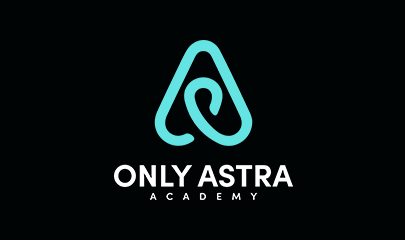
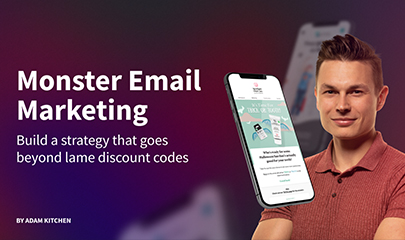


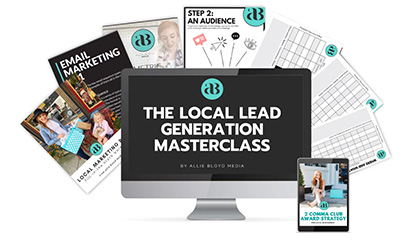

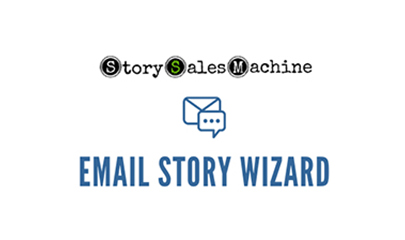

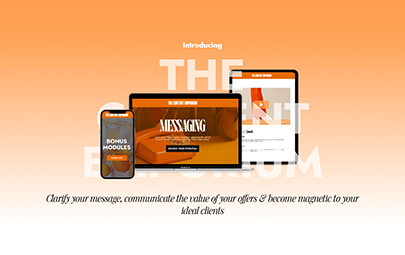


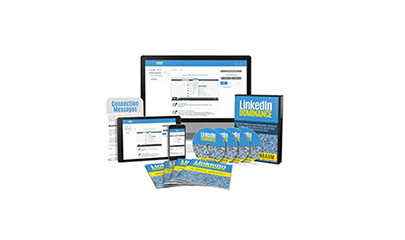



Reviews
There are no reviews yet.